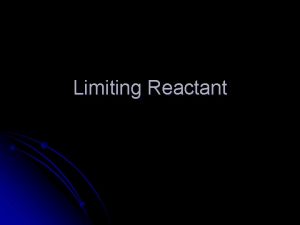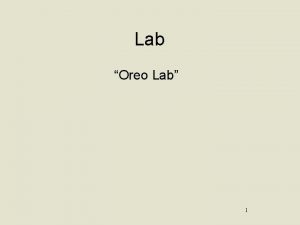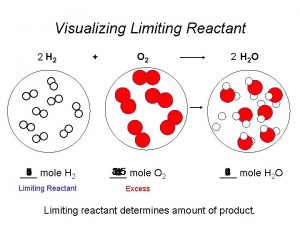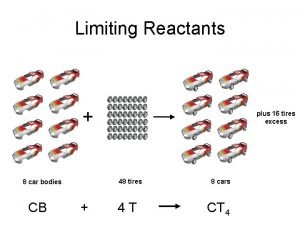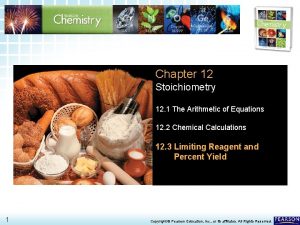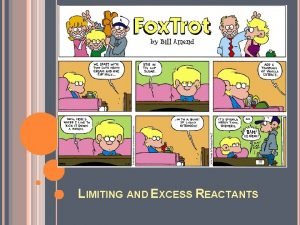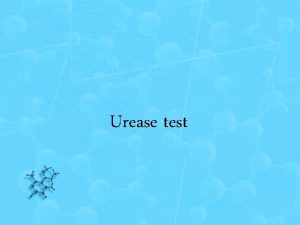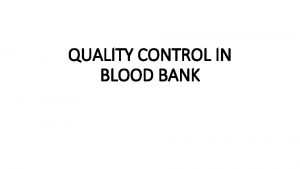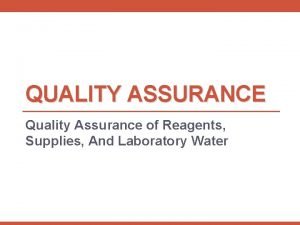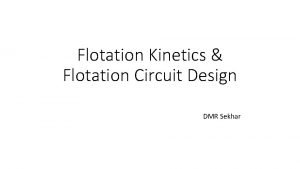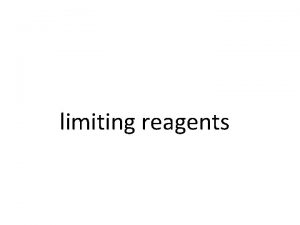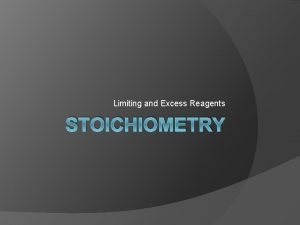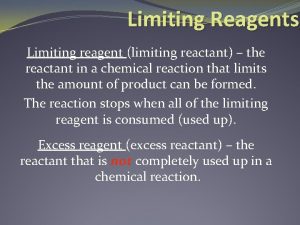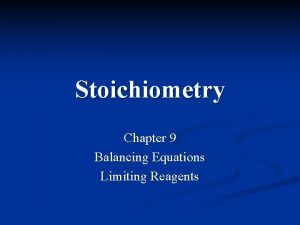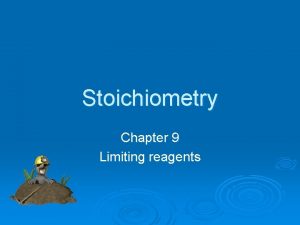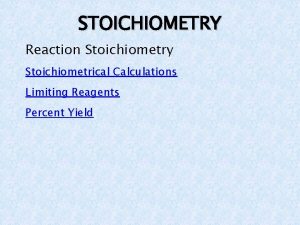Limiting and Excess Reagents STOICHIOMETRY Limiting and Excess









- Slides: 9

Limiting and Excess Reagents STOICHIOMETRY

Limiting and Excess Reagents The reagent that is completely used up or reacted is called the limiting reagent, because its quantity limit the amount of products formed. In a chemical reaction, reactants that are not use up when the reaction is finished are called excess reagents.

Suppose you are a chef preparing a breakfast for a group of people, and are planning to cook French toast. You make French toast the way you have always made it: one egg for every three slices of bread. You never waiver from this recipe, because the French toast will turn out to be either too soggy or too dry. There are 8 eggs and 30 slices of bread in the pantry. How many slices of French Toast can you make?

This is a similar situation with chemical reactions in which one of the reactants is used up before the others - the reaction stops as soon as one of the reactants is consumed. Balanced chemical reaction equations give the ideal stoichiometric relationship among reactants and products. (Like the French Toast recipe) The reactants for a reaction in an experiment are not necessarily a stoichiometric ratio.

Let us consider the reaction between sodium and chlorine. The reaction can be represented by the equation: 2 Na + Cl 2 = 2 Na. Cl This balanced reaction equation indicates that two Na atoms would react with one Cl 2 molecule.

2 Na + Cl 2 = 2 Na. Cl If there are 6 mole of sodium available to react, how many moles of chlorine would be required? There would need to be 3 moles of chlorine needed to react completely with the 6 moles of sodium. If there are more than 3 moles of chlorine available, the excess will remain unreacted and the sodium will limit the amount of product formed.

Two moles of Mg and five moles of O 2 are placed in a reaction vessel, and then the Mg is ignited according to the reaction Mg + O 2 = Mg. O Balance this equation and identify the limiting reagent in this experiment. How much of the excess reagent is left unreacted? What mass of product is formed?

Practice Suppose that a solution containing 3. 50 grams of Na 3 PO 4 is mixed with a solution containing 6. 40 grams of Ba(NO 3)2. How many grams of Ba 3(PO 4)2 can be formed?

Homework Read section 7. 2 Page 254 #23 -26
 Limiting reactant formula chemistry
Limiting reactant formula chemistry Double stuffed oreo lab answers
Double stuffed oreo lab answers Limiting reactant
Limiting reactant Limiting and excess reactants race car answers
Limiting and excess reactants race car answers Limiting reagent and excess reagent
Limiting reagent and excess reagent Limiting and excess reactants formula
Limiting and excess reactants formula Urease test bacteria
Urease test bacteria Quality control in blood bank pdf
Quality control in blood bank pdf High-quality reagents
High-quality reagents Kinetics flotation chemicals
Kinetics flotation chemicals
